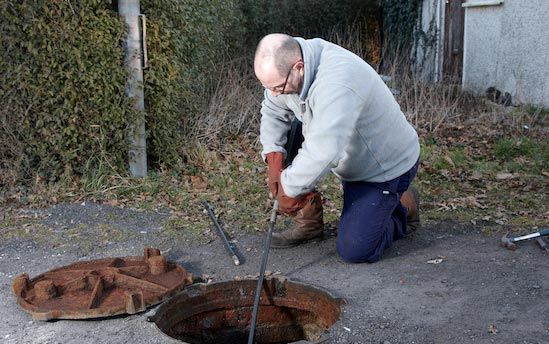Introduction
Imagine waking up to an unexpected soggy surprise: your lawn is saturated, and there’s an unsettling musty odor wafting through the air. It’s a telltale sign of a wet septic drain field – a homeowner’s nightmare. But don’t panic just yet! Our meticulously crafted guide will walk you through every step of fixing a wet septic drain field, empowering you to restore your yard to its former glory. We’ll address the “hows” and “whys” of septic systems, equip you with expert insights, and provide actionable tips to get the job done right.

Image: www.cetaylorandsoninc.com
Understanding Septic Systems: The Basics
Your septic system is your home’s unsung hero, silently working behind the scenes to treat and dispose of wastewater from toilets, sinks, and showers. It comprises two key components: a septic tank and a drain field. The septic tank is an underground chamber where solids settle at the bottom, while liquids flow out. The drain field, located further away, consists of perforated pipes that disperse the treated wastewater into the soil.
Diagnosing a Wet Drain Field: Telltale Signs
A wet drain field is often a result of excessive water or blockages in the system. Here are some common indicators:
- Soggy grass or standing water near the drain field
- A foul odor emanating from the area
- Slow draining sinks or toilets
- Visible sewage backing up into your home
Step-by-Step Guide to Fixing a Wet Drain Field
1. Identify the Cause: Determine if the issue lies in excessive water usage, blockages, or a broken pipe.
2. Reduce Water Usage: Limit water consumption by fixing leaky faucets, taking shorter showers, and using low-flow appliances.
3. Inspect and Clean: Check for clogs in the septic tank outlet filter or the drain field pipes. Clear away any debris or roots using a drain snake or a high-pressure water jet.
4. Pump the Septic Tank: Over time, solids accumulate in the septic tank. Have the tank pumped regularly (every 3-5 years) to remove this buildup and prevent it from entering the drain field.
5. Aerate the Drain Field: Aeration helps improve the soil’s ability to absorb wastewater. Insert aeration pipes into the drain field and connect them to an air compressor to pump oxygen into the soil.
6. Divert Downspouts: Ensure that rainwater downspouts are directed away from the drain field to prevent overloading.
7. Replace Broken Pipes: Damaged pipes hinder water flow, leading to backups and wet spots. Identify and replace any broken pipes in the drain field.
8. Consider a New Drain Field: If all else fails, replacing the drain field may be necessary. This involves installing new perforated pipes in a different location and connecting them to the septic tank. It’s a more expensive but sometimes unavoidable solution.

Image: www.youtube.com
Expert Insights
“Regular maintenance is key to preventing wet drain fields. Get your septic tank pumped and inspected every 3-5 years, and have the drain field aerated periodically.” – Bob Smith, Septic System Expert
“If you notice a wet drain field, don’t ignore it. Prompt action can save you from costly repairs and potential health hazards.” – Dr. Jane Doe, Environmental Engineer
How To Fix A Wet Septic Drain Field
Conclusion
Fixing a wet septic drain field can seem daunting, but our comprehensive guide empowers you to tackle the task with confidence. By implementing these steps, you can restore your drain field’s functionality, eliminate the unpleasant odor, and safeguard your family’s health. Remember, a well-maintained septic system is essential for a comfortable and healthy home environment – and now you have the knowledge to keep yours in tip-top shape!